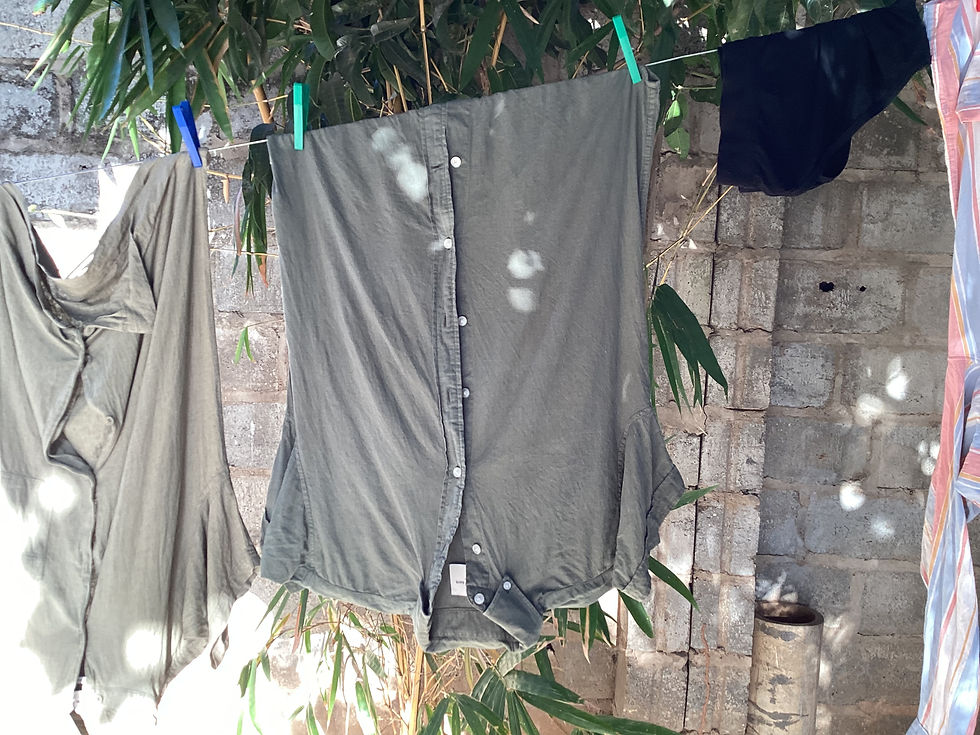ZAMBIA LETTERS, 5
- Ludvig Uhlbors
- 6 juni 2025
- 3 min läsning
Uppdaterat: 28 juni 2025

I spent time at the library today, familiarizing myself with the literature. Many of the books come from Jan Groth's private library and were inherited by Victor after Jan´s passing. The library is also where the internet works best, so it's the place to do research and have meetings.
We have decided to establish personal contacts as soon as possible. This way we will use our time more effectively. The curators have been very helpful in this and immediately arranged a couple of meetings for us. Tomorrow we will see two lecturers from the University of Lusaka who are leading the course “Intangible cultural heritage”. They have researched Makishi and can probably answer many of our questions. We also hope that they will put us in touch with someone who practices the tradition. On Friday we will meet Victor Makashi who is the “Director of national Council of mask work, Zambia”, which sounds promising. These are just a few of the names on our list so I think we will have a lot to do in the near future.
At lunchtime I met Victor out in the garden. He was cutting branches from one of the palm trees, which obscured the view between the library and the studio. He explained that he wanted to improve the visibility for the surveillance cameras. I asked if burglaries were common in the area and he said it wasn’t a big problem but the books in the library are of great sentimental value and he would mourn them if they were stolen.
We sat down and talked. He told me about Martin Abasi Phiri, whose portrait adorns one of the façades of the centre. Martin was an early pioneer when it comes to artist-run galleries and venues in Zambia. Today this is common in countries like Zimbabwe and Tanzania and Zambia but when Martin started, in the 1980s, there were no such venues. In Lusaka there was a gallery and those associated with it were part of a relatively closed, elitist clique. There was no higher education in art and there still isn’t.
Martin went to China and studied there for six years. When he returned, he decided to establish the organization “The Zambian National Visual Arts Council”, which was an artist-driven arena that conducted training and organized exhibitions. For people like Victor, that organization became a watering hole and many young artists in Zambia became involved in the activities. It spread quickly under Martin’s leadership and established itself throughout Zambia. After three years the organization had branches in every district.
Through a collaboration with Norad, it became possible for the organization to grow and organize scholarships for young artists to travel abroad and it was such a scholarship that enabled Victor to travel to Norway and study at KHiO.
He says that Martin is relatively unknown in Zambia, despite his great importance to the art scene. Therefore, LuCAC has initiated the production of a publication that will highlight his memory and the importance that his work holds. The book will be published at the end of the year and will contain texts from many artists and colleagues of Martin, from many different countries, some of whom studied with him in Beijing.
When he talks about this, he does so with the same feeling of deep gratitude as he does when he talks about Jan Groth.
In the evening we took a taxi to a shopping mall. We arranged a Zambian SIM card, took out some cash and shopped groceries. Later, I read a couple of books about Makishi, which I found in the library, and another scene from “Rannsakningen”.




Kommentarer